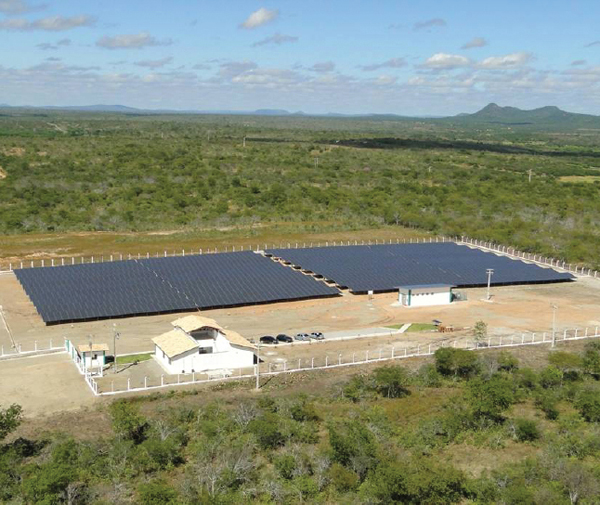Brown liquor and solar cells to provide sustainable electricity
ScienceDaily (Mar. 22, 2012) — A breakthrough for inexpensive electricity from solar cells, and a massive investment in wind power, will mean a need to store energy in an intelligent way. According to research at Linköping University, published in Science, batteries of biological waste products from pulp mills could provide the solution.
Organic solar cells based on conductive plastic is a low cost alternative that has achieved high enough performance to be upscaled and, in turn, become competitive. However, solar electricity must be able to be stored from day to night, as well as electricity from wind turbines from windy to calm days.
In conventional batteries metal oxides conduct the charge. Materials, such as cobalt, are expensive and a limited resource, therefore, low cost solutions are sought preferably with renewable materials.
“Nature solved the problem long ago,” says Olle Inganäs, professor of biomolecular and organic electronics at Linköping University (LiU) and lead author of the article in a recent edition of Science.
He drew inspiration from the process of photosynthesis, where electrons charged by solar energy are transported by quinones; electrochemically active molecules based on benzene rings composed of six carbon atoms. Inganäs chose the raw material brown liquor that is a by-product from the manufacture of paper pulp. The brown liquor is largely composed of lignin, a biological polymer in the plant cell walls.
To utilise the quinones as charge carriers in batteries, Inganäs and his Polish colleague Grzegorz Milczarek devised a thin film from a mixture of pyrrole and lignin derivatives from the brown liquor. The film, 0.5 microns in thickness, is used as a cathode in the battery.
The goal is to offer ways to store renewable electricity where it is produced, without constructing up large grids. In several countries, major wind power investments are planned. Meanwhile, the performance of cheap organic solar cells has now reached a critical level. A research team at the University of California, Los Angeles, has recently reported efficiency of more than 10 percent of the energy of the captured sunlight.
According to Inganäs who for many years conducted research on organic solar cells, the efficiency is sufficient to initiate an industrial scale up of the technology.
“Now we need more research into new energy storage based on cheap and renewable raw materials. Lignin constitutes 20-30 percent of the biomass of a tree, so it’s a source that never ends.”
Share this story on Facebook, Twitter, and Google:
Other social bookmarking and sharing tools:
Story Source:
The above story is reprinted from materials provided by Linköping University.
Note: Materials may be edited for content and length. For further information, please contact the source cited above.
Journal Reference:
- Grzegorz Milczarek and Olle Inganäs. Renewable Cathode Materials from Biopolymer/Conjugated Polymer Interpenetrating Networks. Science, 2012 DOI: 10.1126/science.1215159]
Note: If no author is given, the source is cited instead.
Disclaimer: Views expressed in this article do not necessarily reflect those of ScienceDaily or its staff.


